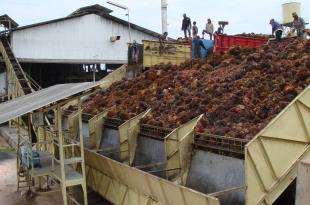Global drive for energy from waste water
Palm fruit usually consists of forty percent water. Pressing tons of fruit into palm oil thus generates huge amounts of liquid waste. These effluents produce methane gas, one of the worst greenhouse gases. Plantations will not hesitate to dump the effluent into open waterways, with disastrous consequences for the environment. Zebra saw an opportunity, and took pen to paper.
Fruit juices contain many natural, organic compounds. Dump fruit juice in water and the rot that ensues will generate methane, a strong greenhouse gas. Zebra developed a method to treat the effluents in a bioreactor. The effluent arrives in a closed tank, kept at an optimum temperature for bacteria growth. These micro-organisms turn the compounds in the effluent to biogas. The gas is used to generate energy. A triple victory for the bioreactor: we clean water, we keep greenhouse gases from forming and we generate power.
Practice
This installation has moved from proof of concept to small-scale application: we're using it all over the globe. A fine example is the Lokomasama region in Sierra Leone. Palm trees grow here in the wild, so a plantation proves equally fertile. We proposed training for local farmers to run their plantations more efficiently and more environmentally sustainable. We also designed two factories where they can bring their fruit to have it pressed. The oil is used locally and what remains is exported. The effluent that flows from the mill serves to provide electricity for the entire region, using a bioreactor.

